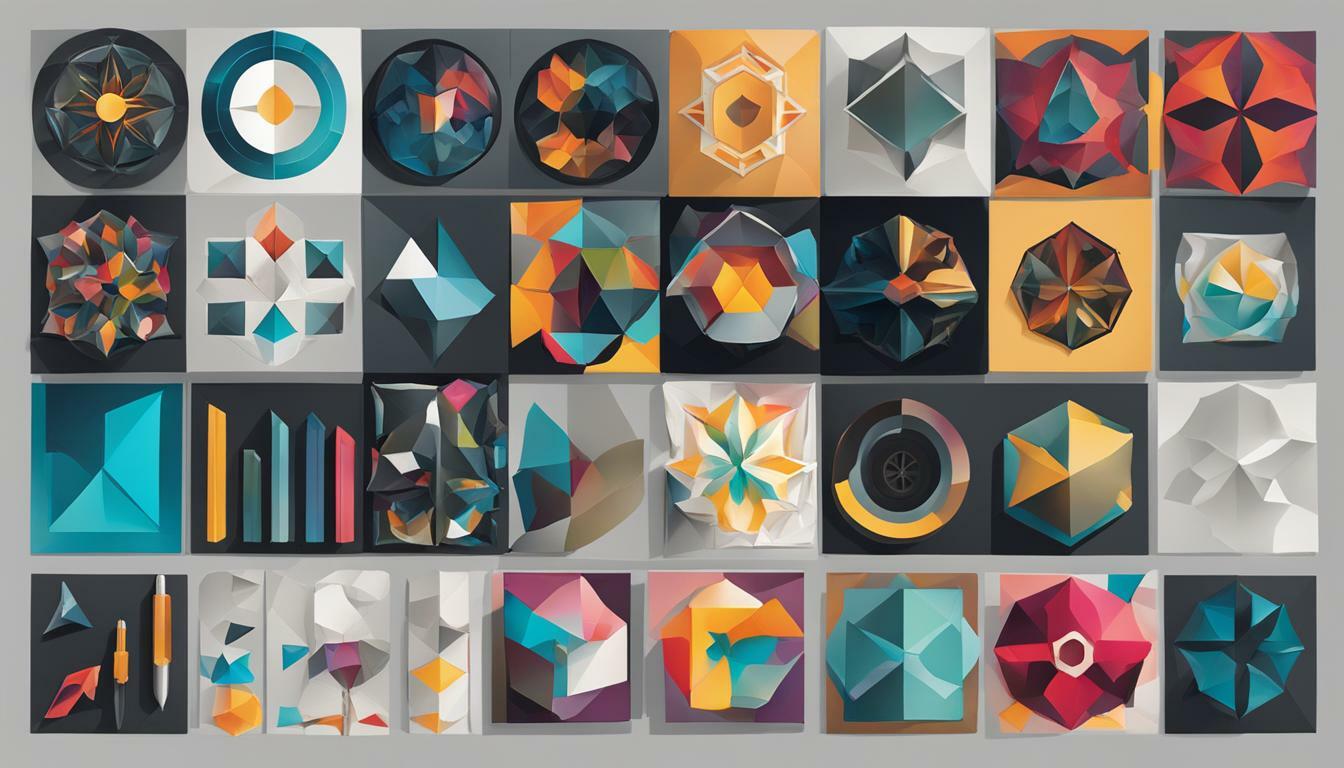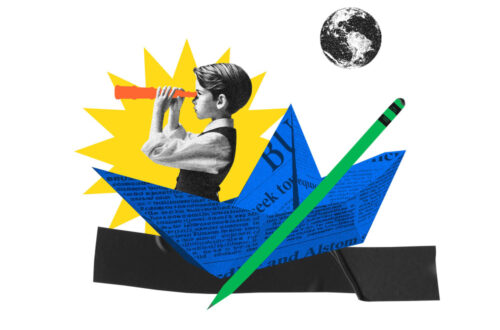When it comes to graphic design software, Adobe offers three powerful applications: Photoshop, Illustrator, and InDesign. Each of these applications has unique features that make them best suited for specific tasks and projects.
Illustrator is ideal for creating precise, editable vector graphics like logos, icons, and illustrations. Photoshop is great for working with pixel-based images designed for print, web, and mobile apps, offering powerful editing tools for correcting exposure, cropping images, altering colors, and creating composites. InDesign is the go-to choice for designing and publishing multipage documents containing text, vector artwork, and images. It allows for precise positioning of page elements and offers professional typesetting features for consistent formatting.
While each program has its own strengths, combining them can lead to a seamless and efficient workflow. It is also important to consider file support and output options when choosing between Photoshop, Illustrator, and InDesign.
Key Takeaways
- Adobe offers three powerful graphic design applications: Photoshop, Illustrator, and InDesign.
- Illustrator is best for creating precise vector graphics, while Photoshop excels for pixel-based images and editing tools. InDesign is the top choice for multipage documents with text and images.
- Combining multiple programs can lead to a seamless and efficient workflow.
- Consider file support and output options when choosing between these programs.
Illustrator – The Vector Graphic Powerhouse
When it comes to creating precise and editable vector graphics that can be scaled to any size without losing quality, Illustrator is your go-to application. It specializes in creating logos, icons, and illustrations with clean lines and sharp details.
Illustrator’s tools for shaping, transforming, and coloring vector elements give you the power to create complex compositions with ease. With the ability to add gradients, textures, and patterns to your designs, you can create a variety of stunning effects. Plus, its typography design tools make it easy to create beautiful text designs.
Whether you’re working on web graphics, printed materials, or mobile apps, Illustrator’s vector graphics make your designs easily adaptable to any screen or device. So, no matter what size your design is viewed at, it will look just as crisp as the original.
Photoshop – The Pixel-Based Mastermind
Photoshop, on the other hand, is the go-to application for working with pixel-based images designed for print, web, and mobile apps. With its powerful editing tools, you can correct exposure and color balance, crop and straighten images, alter colors, remove blemishes, and combine multiple images. Whether you’re a photographer, web designer, or digital artist, Photoshop provides a wide range of tools for editing and manipulating images to meet your specific needs.
For print materials, Photoshop allows for precise control over image resolution, making it ideal for designing layouts for brochures, posters, and other printed media. It also offers features specifically designed for web and mobile app design, such as support for web-safe colors, artboards, and export options optimized for web and mobile formats.
With a wide range of editing tools and capabilities, Photoshop is an essential tool for any designer working with pixel-based images. Its versatility and power make it the perfect choice for professional designers looking to create stunning visuals for any medium.
InDesign – The Layout and Publishing Pro
InDesign is specifically designed for designing and publishing multipage documents containing text, vector artwork, and images. Its emphasis on layout and typesetting makes it a favorite among designers for creating polished and professional documents.
Whether you’re working on a print brochure, a digital magazine, or an online portfolio, InDesign has the tools you need to create stunning layouts that are sure to impress. Its advanced typesetting features allow for precise control over every element of your design, while its support for interactive documents means you can easily create engaging content that can be published online.
With InDesign, you can easily import and work with a variety of file formats, including PDFs, images, and even audio and video files. Its support for CMYK color and high-resolution images makes it a popular choice for designers working on print projects, while its ability to export documents to EPUB, HTML, and PDF formats means you can easily share your work online or across multiple platforms.
Overall, InDesign is a versatile and powerful tool that is essential for any designer working with multipage documents or publications. Its support for digital and print materials makes it a great choice for creating everything from magazines and brochures to eBooks and interactive documents.
Creating an Efficient Workflow with All Three Applications
An efficient workflow can be developed by using all three applications together. With Photoshop, you can edit and manipulate pixel-based images for print, web, and mobile apps. Meanwhile, Illustrator lets you create vector graphics that can be scaled to any size without sacrificing quality. And for layout design and typesetting, InDesign is the tool of choice.
By using all three applications in tandem, you can create composite designs with ease. For example, you can design icons and logos in Illustrator, edit photos in Photoshop, and bring everything together in InDesign for a polished, professional look.
The key to a successful workflow is understanding the strengths of each program and how they complement each other. Knowing when to use Photoshop for pixel-based images or when InDesign is best suited for multipage documents saves time and effort in design projects.
For instance, creating a brochure involves combining text, images, and graphics in a layout that is both visually appealing and informative. Designers can use InDesign to handle multiple pages and complex layouts, while Illustrator and Photoshop can be used to create graphics and edit images for the brochure.
In conclusion, using all three Adobe applications together is the best way to create a seamless workflow that maximizes efficiency and professional design results. So be sure to choose the right tool for the job and enjoy the benefits of a robust and efficient design workflow!
Considerations for Choosing the Right Application
While using all three applications together offers more possibilities, it is still possible to create a complete professional design with just one application. When choosing the right software, it’s important to consider the specific strengths and limitations of each application in order to achieve the best results.
| Application | Strengths | Limitations |
|---|---|---|
| Photoshop | – Ideal for working with pixel-based images – Powerful editing tools – Ability to create image-heavy designs |
– Not suitable for creating precise vector graphics – Large file sizes |
| Illustrator | – Best suited for creating precise, scalable vector graphics – Perfect for logos, icons, and illustrations |
– Not ideal for working with pixel-based images – Limited text editing capabilities |
| InDesign | – Designed for layout and publishing, specifically for multipage documents – Ability to combine text, images, and artwork |
– Not suitable for creating precise vector graphics – Limited image editing capabilities |
Understanding your specific project needs and goals is key when choosing the right software. If you’re working on a brochure or newsletter, InDesign would be the most suitable choice. If you need to create a logo or other vector-based artwork, Illustrator would be the way to go. And if you’re editing photos or creating web graphics, Photoshop would be your best bet.
It’s also important to consider file formats and compatibility when choosing an application. Photoshop supports a wide range of file types, including PSD, TIFF, and JPEG, while InDesign offers export options such as PDF, EPS, and JPG.
When it comes to pricing, Adobe’s applications are fairly standardized, but it’s worth exploring student pricing or older versions of the software to save money if you only need one or two applications.
Ultimately, choosing the right application will depend on your specific needs and goals. By understanding the strengths and limitations of each design software, you can make an informed decision and create a complete professional design with confidence.
Pricing Options and Affordability
In terms of pricing, Adobe offers a bundle of all its apps, including Photoshop, Illustrator, and InDesign, which can save money for those planning to use all three regularly. However, for individuals who only need one or two of these programs, purchasing them individually can be more cost-effective.
It’s also important to consider your usage frequency and needs when deciding between a monthly subscription or a one-time payment. Students can take advantage of discounted pricing options, making these professional design tools more affordable for those still in school.
Overall, while the price of these programs may seem steep, it’s important to remember that they are industry-standard tools for creating professional-looking designs. Investing in the right software for your needs can ultimately save time and money in the long run, as well as help you create stunning and effective visual content for your personal or professional projects.
Conclusion: Choosing the Right Software for Your Design Needs
In conclusion, when choosing between InDesign, Illustrator, and Photoshop, it is essential to consider the specific needs of the project. Each software has its strengths and limitations, and a professional designer should know how to use them accordingly to achieve the best results.
If you are looking to create vector-based graphics such as logos, icons, and illustrations, Illustrator is your go-to powerhouse. Its precise shape and text design tools make it the preferred choice for typography design.
If you are working with pixel-based images for print, web, and mobile apps, then Photoshop is the one you need. Its versatile range of editing tools can bring any design to life.
For multipage documents and layout design, InDesign is the application that can cater to all your needs. It is perfect for typesetting and provides great support for digital and print materials.
Considerations for Choosing the Right Application
Choosing the right design software for your project is critical to achieve a professional design. The considerations you should keep in mind include the type of project you are working on, your preferred style, and your level of expertise in using the various software.
Pricing Options and Affordability
Adobe offers multiple pricing options that include the Adobe bundle and individual software purchases. If you are a student or a beginner, there are affordable options available as well.
In conclusion, the decision to choose the right software for your design needs is a crucial one. By considering the strengths and limitations of each application, you can create professional designs that stand out.




